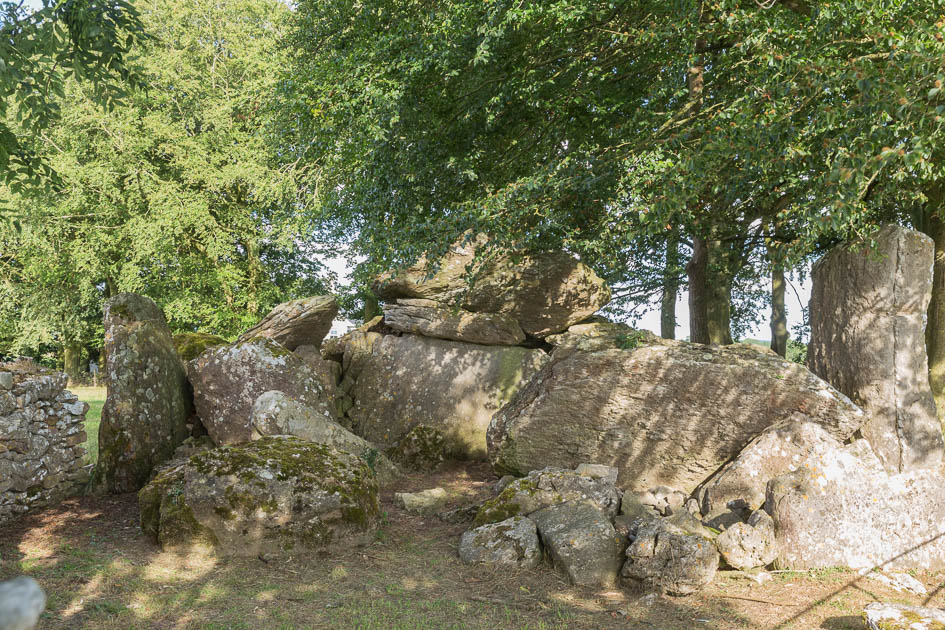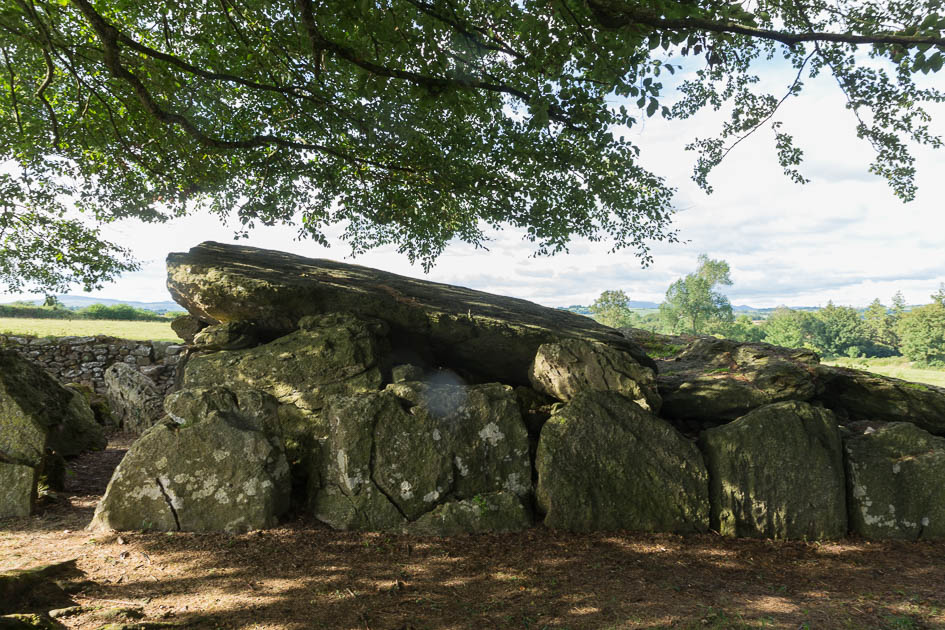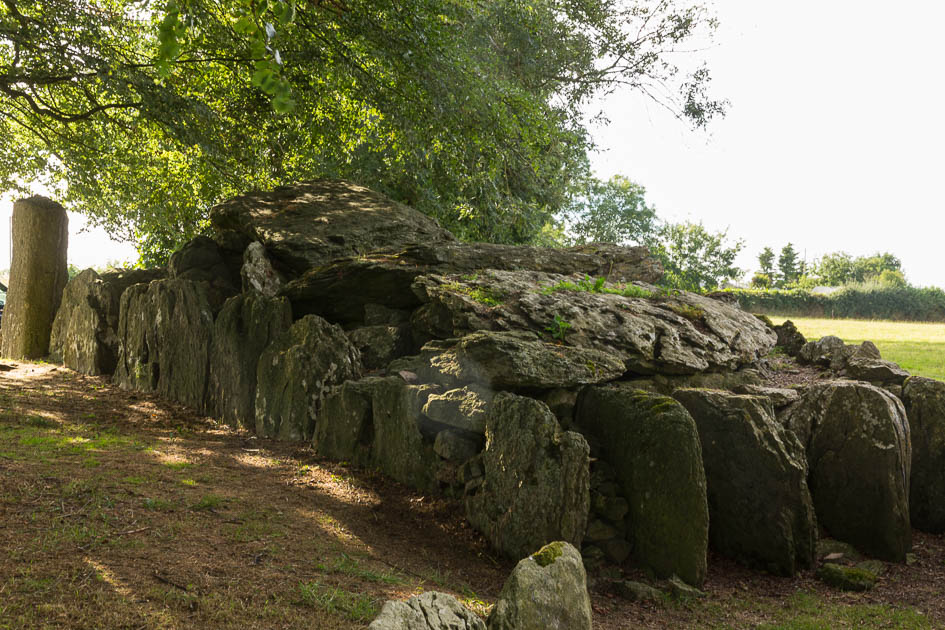Labbacallee Wedge Tomb – The Witch’s Bed
Located just a short drive from Fermoy, Co. Cork, is Labbacallee, The Witch’s Bed – the largest wedge tomb in Ireland. You come across it unexpectedly, just on the side of a narrow country road, with only enough room for 2 cars to pull in. But it is an amazing find.

I am fascinated by these megalithic sites that are literally everywhere in Ireland. The sheer size of the stones moved into place and lifted by people using only primitive tools amazes me. And this one is massive.

This site, Labbacallee, dates from about 2300 BC. It has 3 huge capstones resting atop the standing stones or orthostats. The largest of these weighs about 10 tons. Surrounding it is stone kerbing that once was part of the massive earth and stone cairn that covered this tomb. At the rear part there are three buttress stones. And nearby is another, smaller cairn.

The tomb has two distinct burial chambers and there may have even been a third ceremonial chamber in the front that was destroyed when the road and stone walls were built in the nineteenth century. Like many of these monuments, the setting sun’s rays enter through the front chamber on the days of the equinox in March and September.

The name of the place, Labbacallee (Leaba Chaillí in Irish) means The Hag’s Bed or The Witch’s Bed. Excavation of the site began in 1934. After removing all the stone packing, debris, and small finds, the excavators discovered the skeletal remains of a woman. Her head had been severed and it was buried in an upright position in the second chamber.
No one knows why she was buried in this manner. Was she a goddess and buried in this massive tomb as a place of honor? Or was she indeed shunned, and banished as a witch?
In Irish Folklore there is a creature called The Hag of Beara (Cailleach Bhéarra), who can be described as a witch, a goddess or an ancient nun. Locally Labbacallee is associated with the Cailleach Bhéarra, who was said to have become angry with her husband and subsequently killed him.
It might be rather farfetched to associate the 4000-year-old remains of a woman with the Celtic folklore that came nearly 2000 years later. But still, witches or goddesses, they were purported to possess supernatural powers. The thousands of years of oral history may have blended them together. The truth lies buried in time and we can only guess.
But it remains that Labbacallee is a fascinating place with a fascinating history. It is a wonderful stop if you are in the area. Don’t miss it.

 Call us using WhatsApp
Call us using WhatsApp